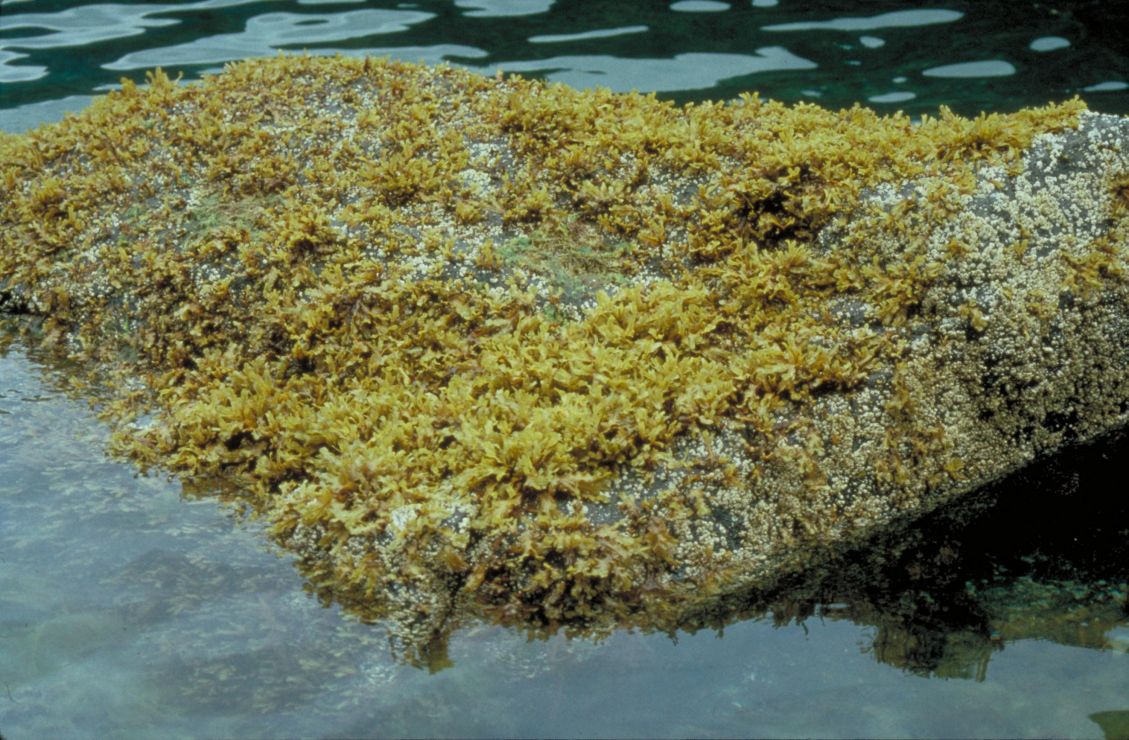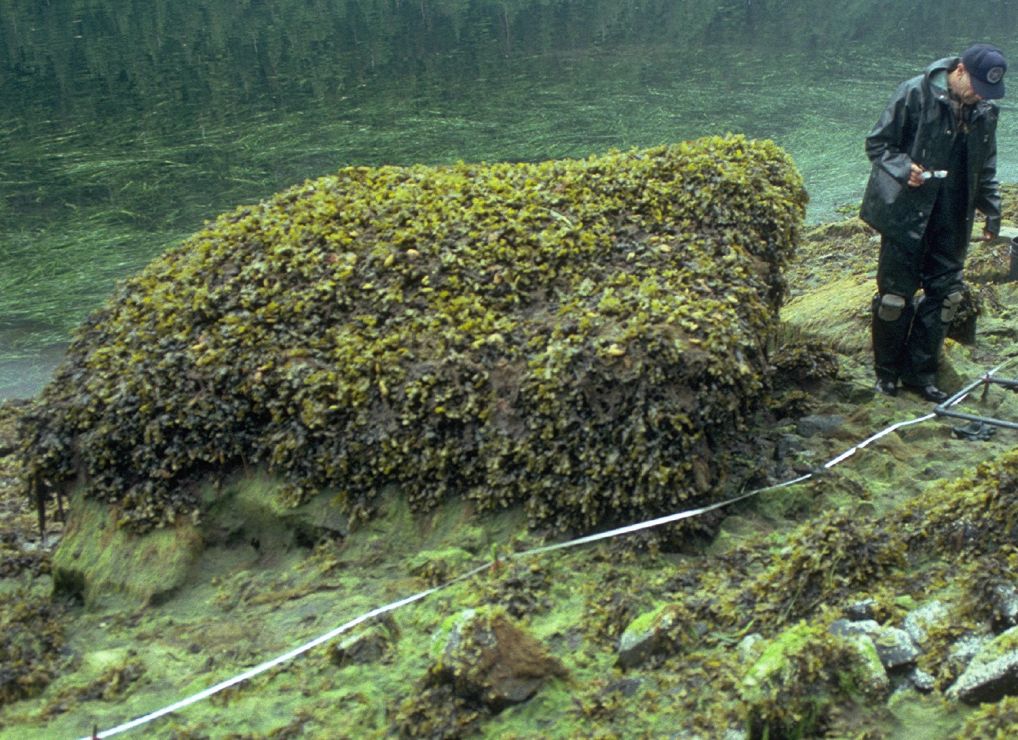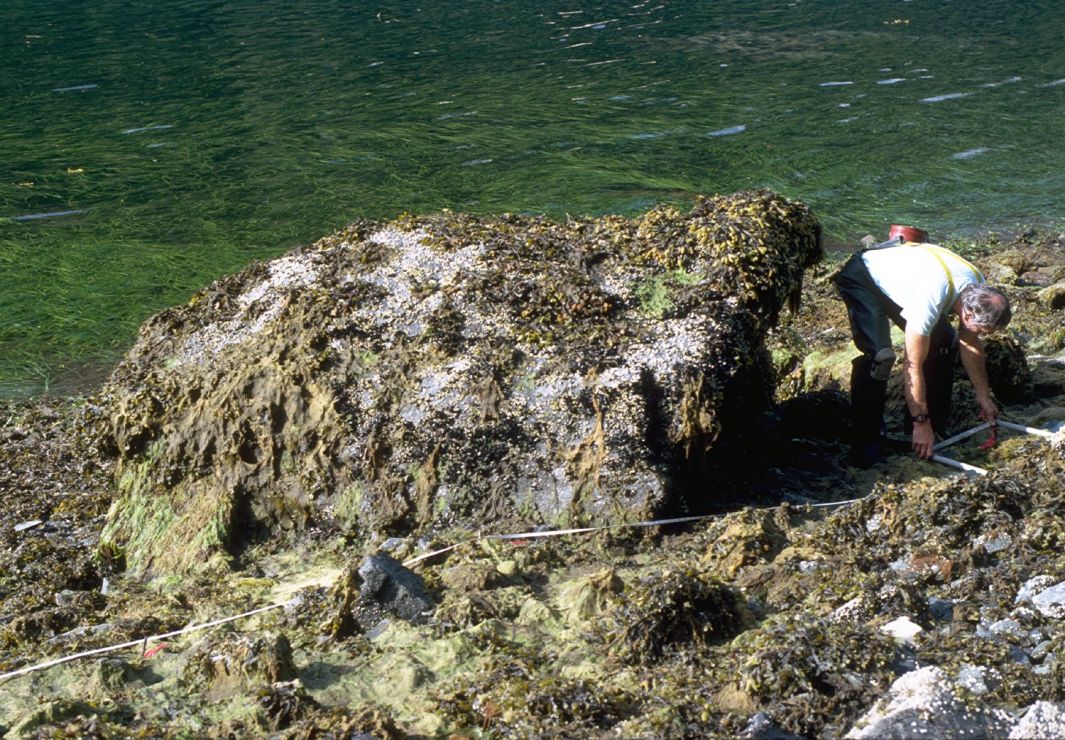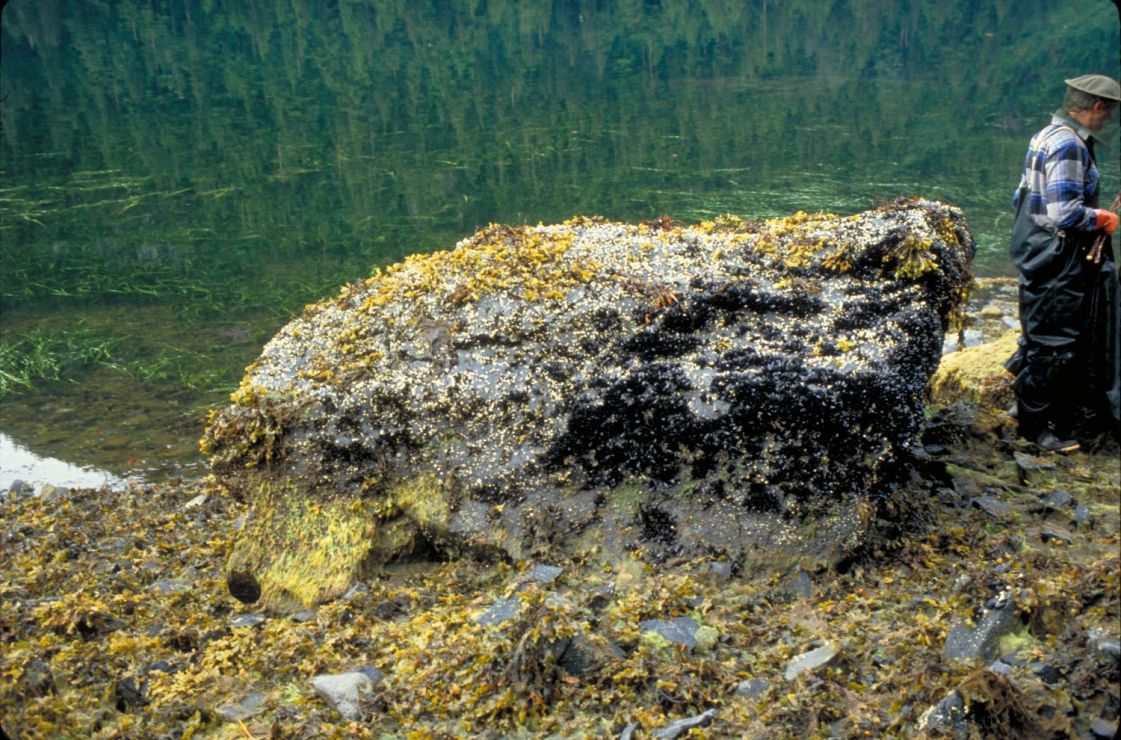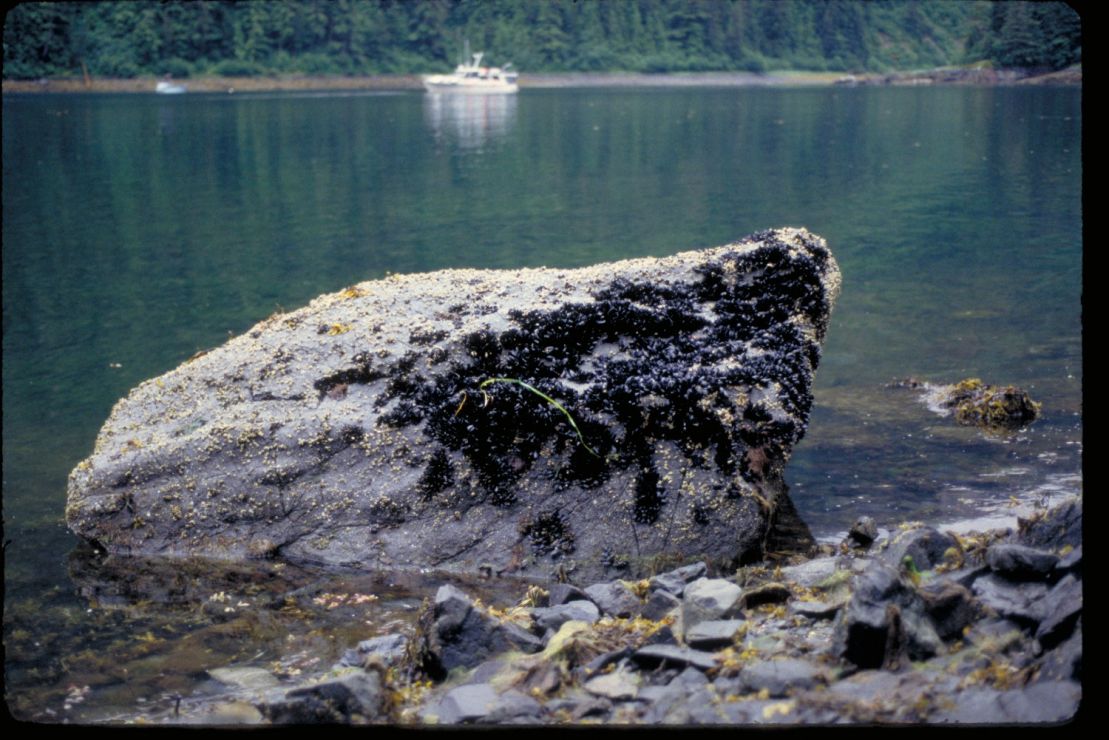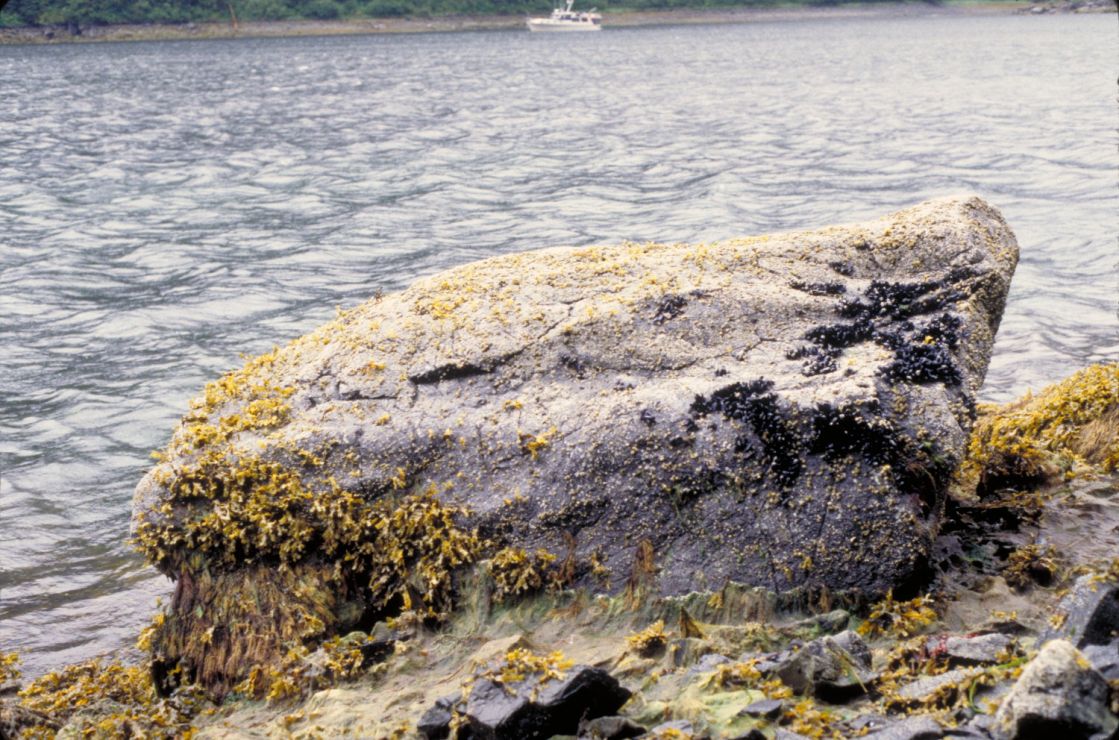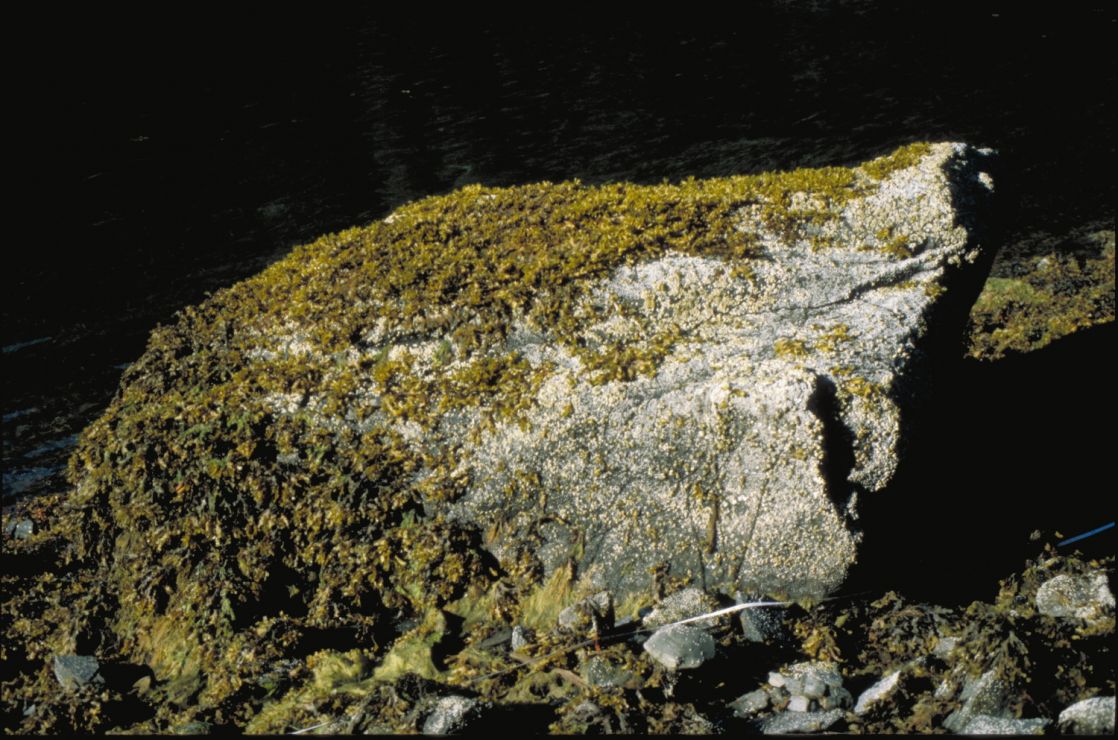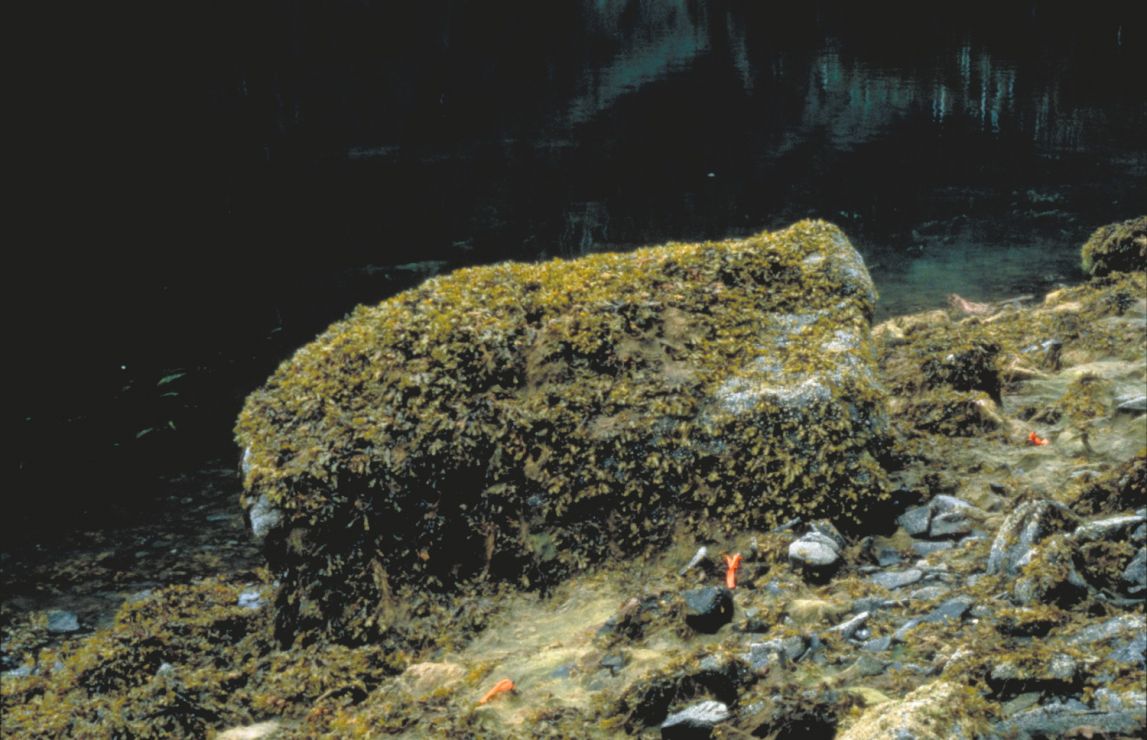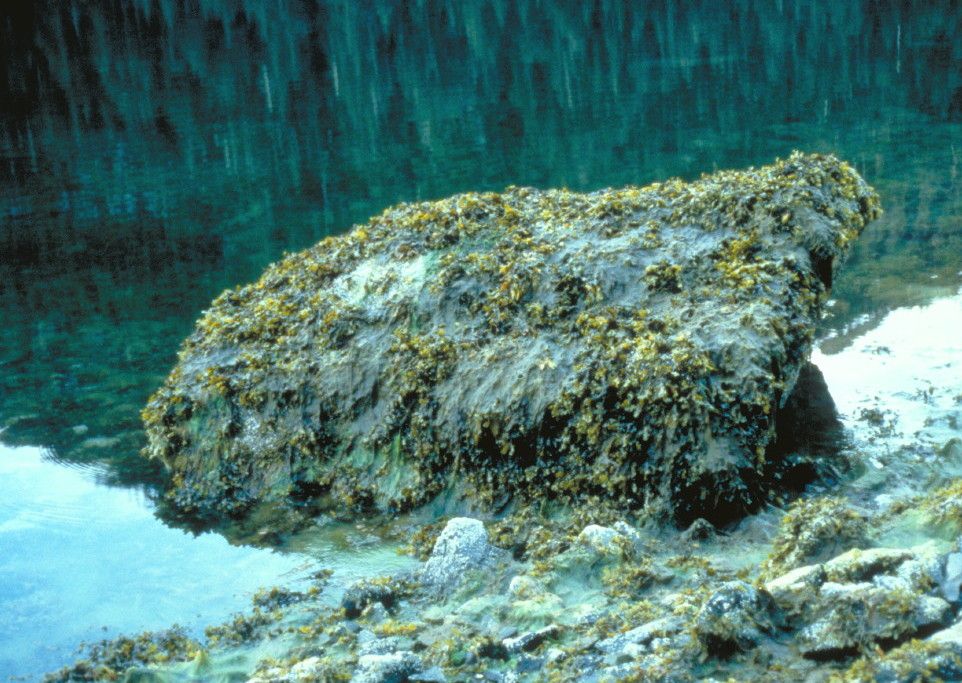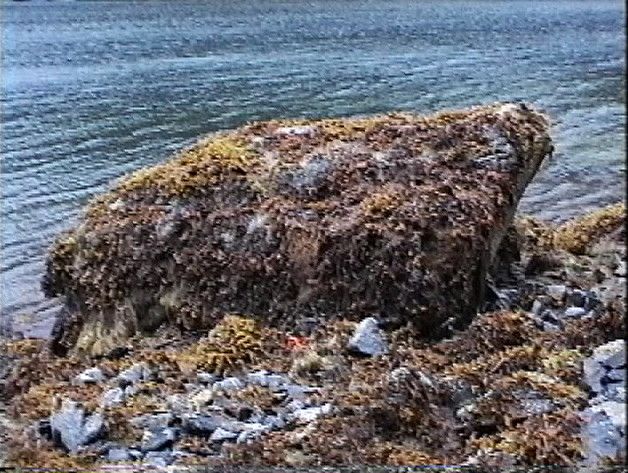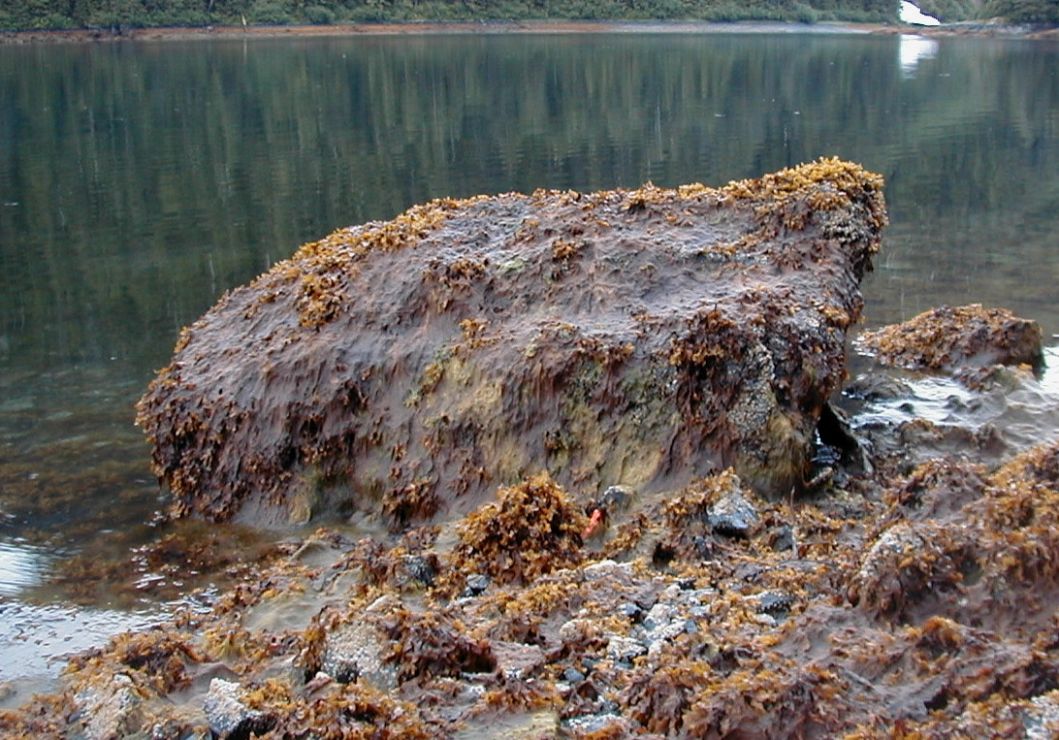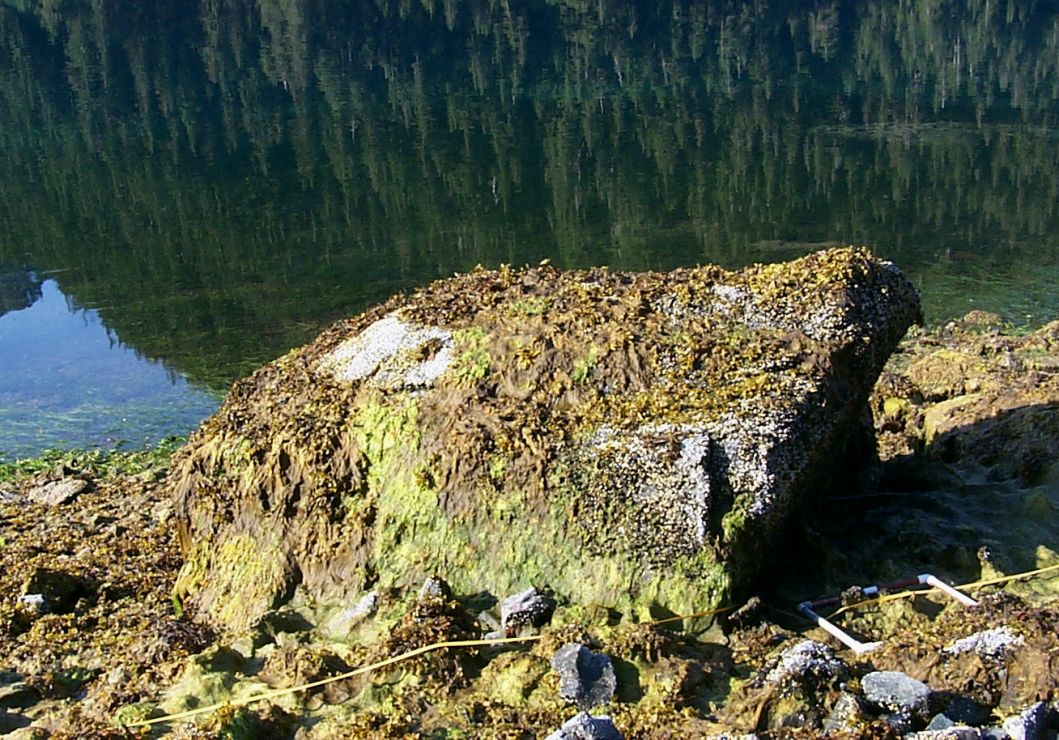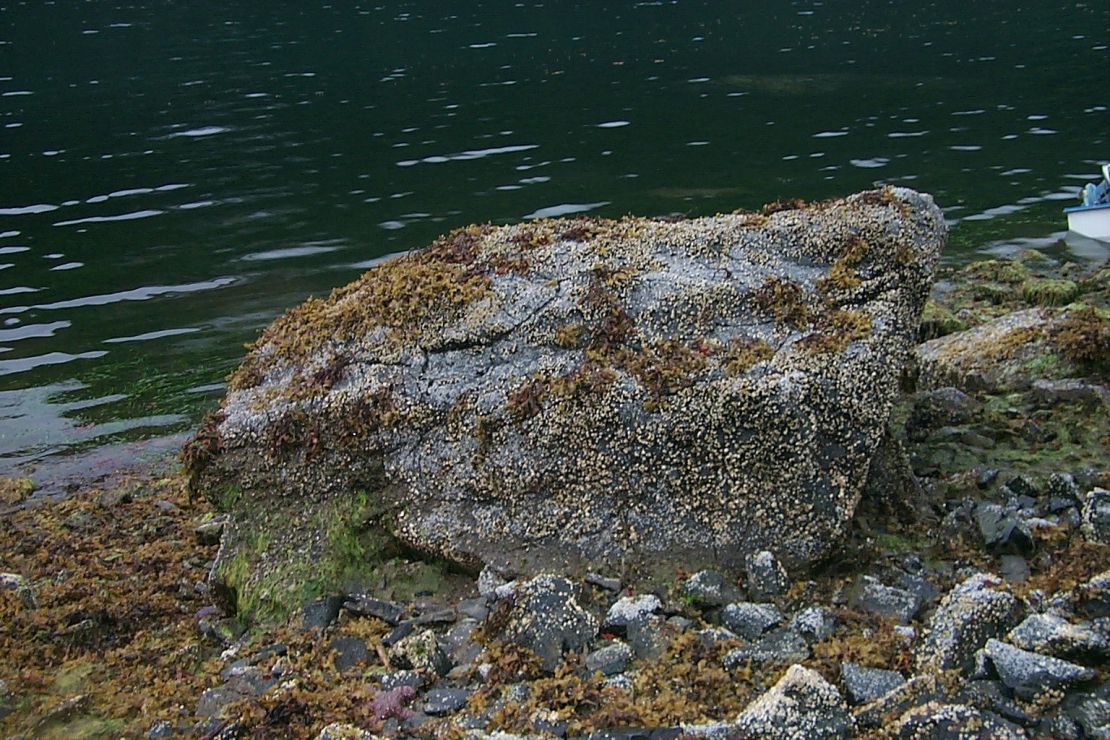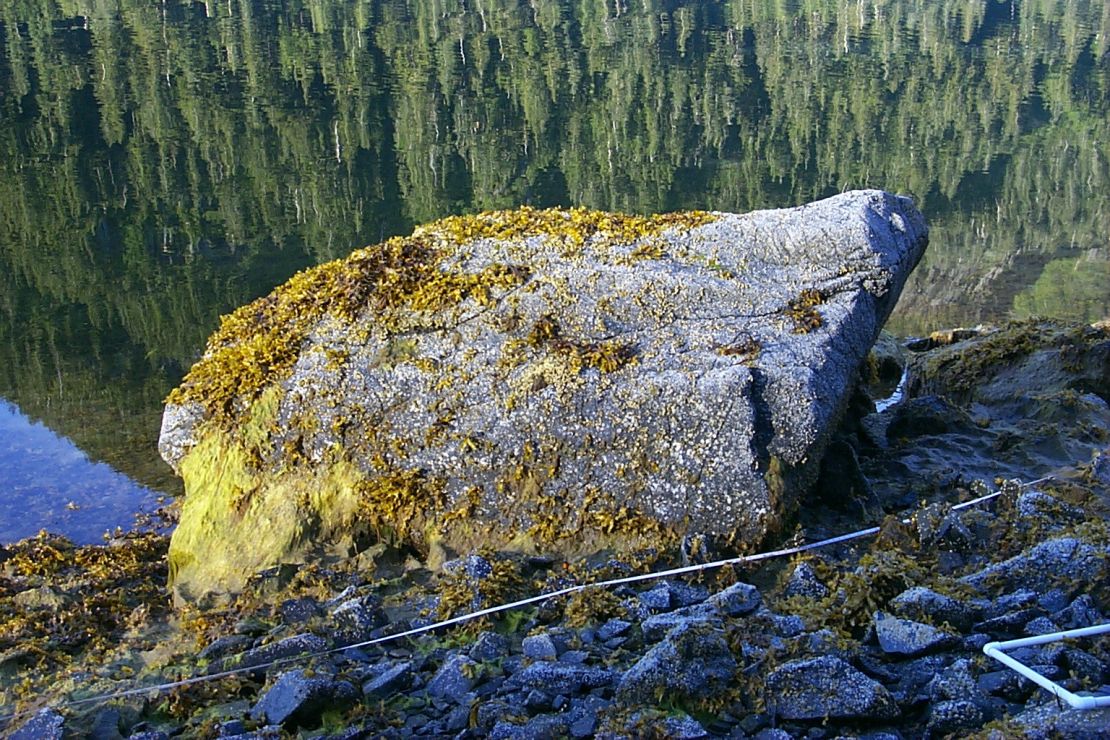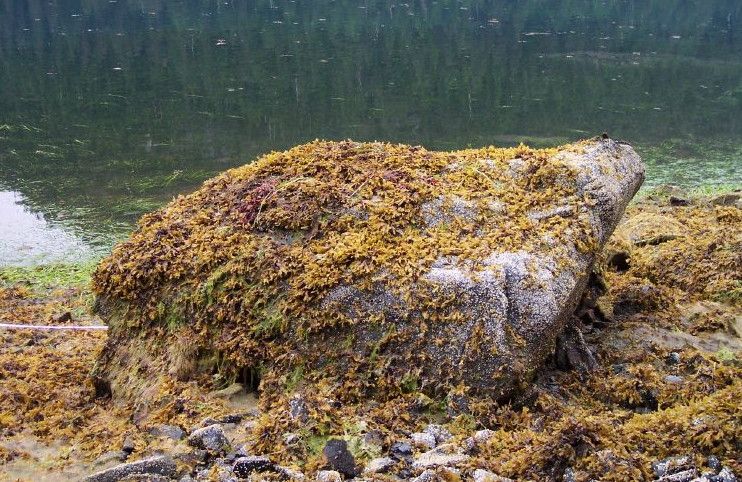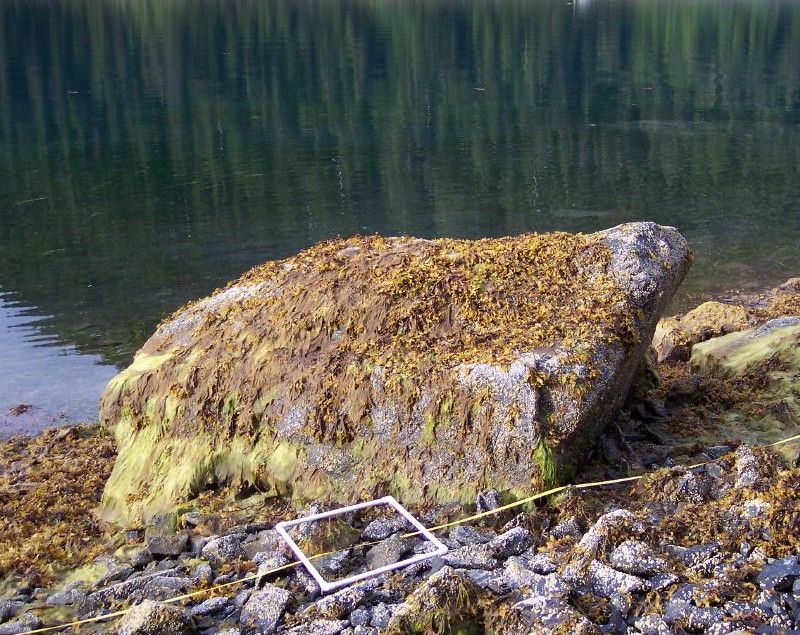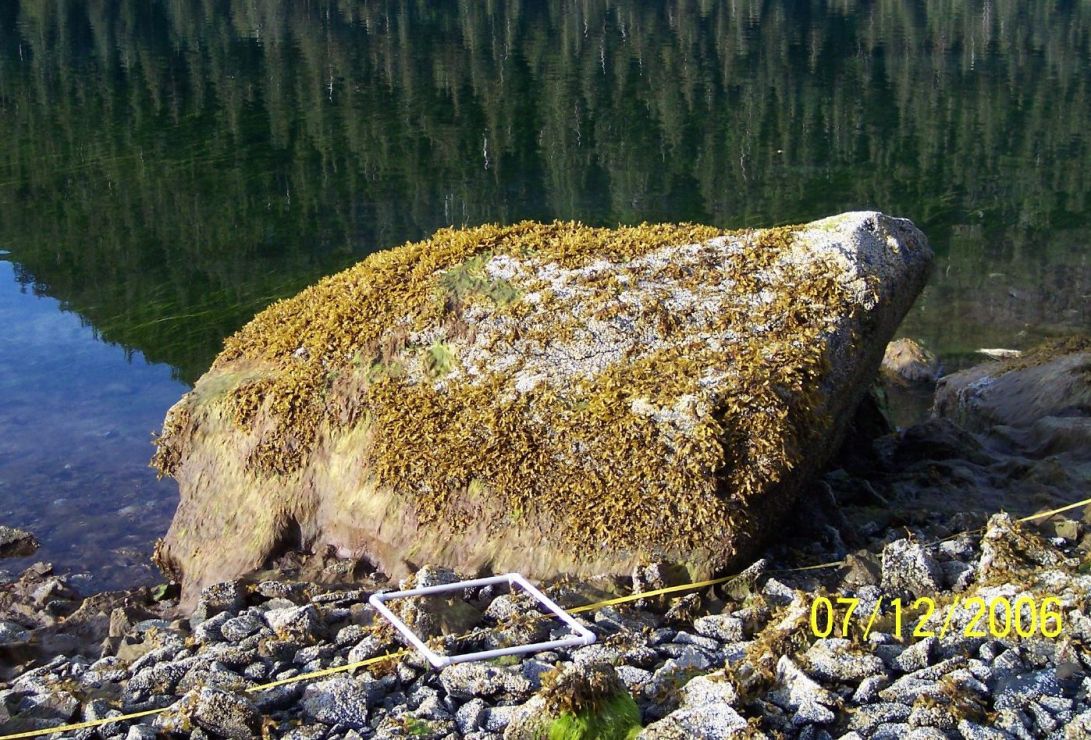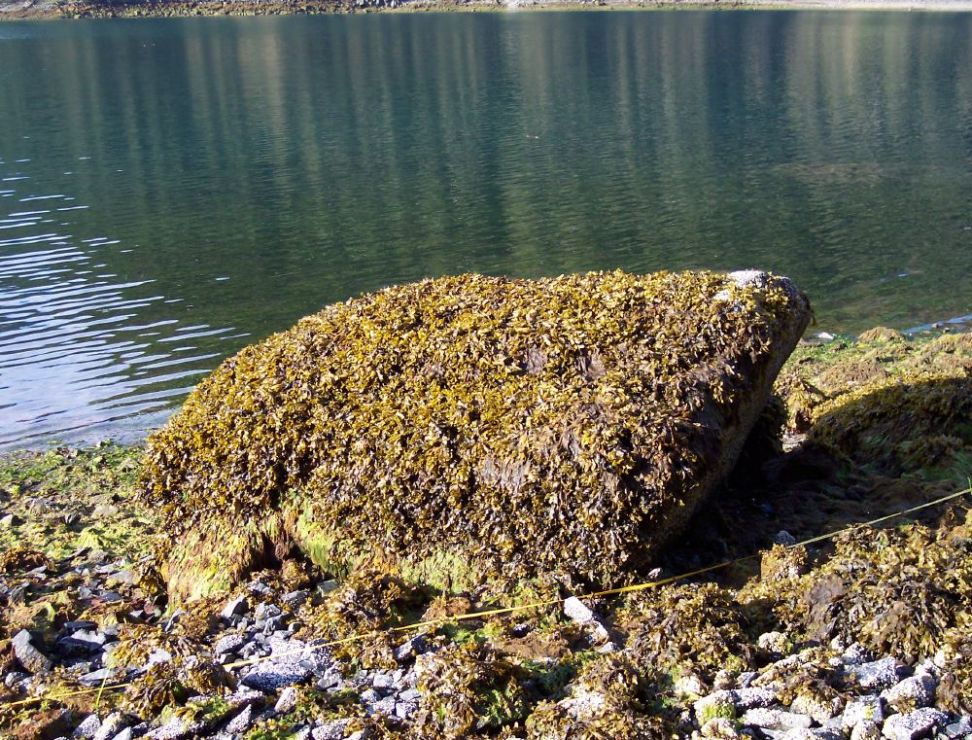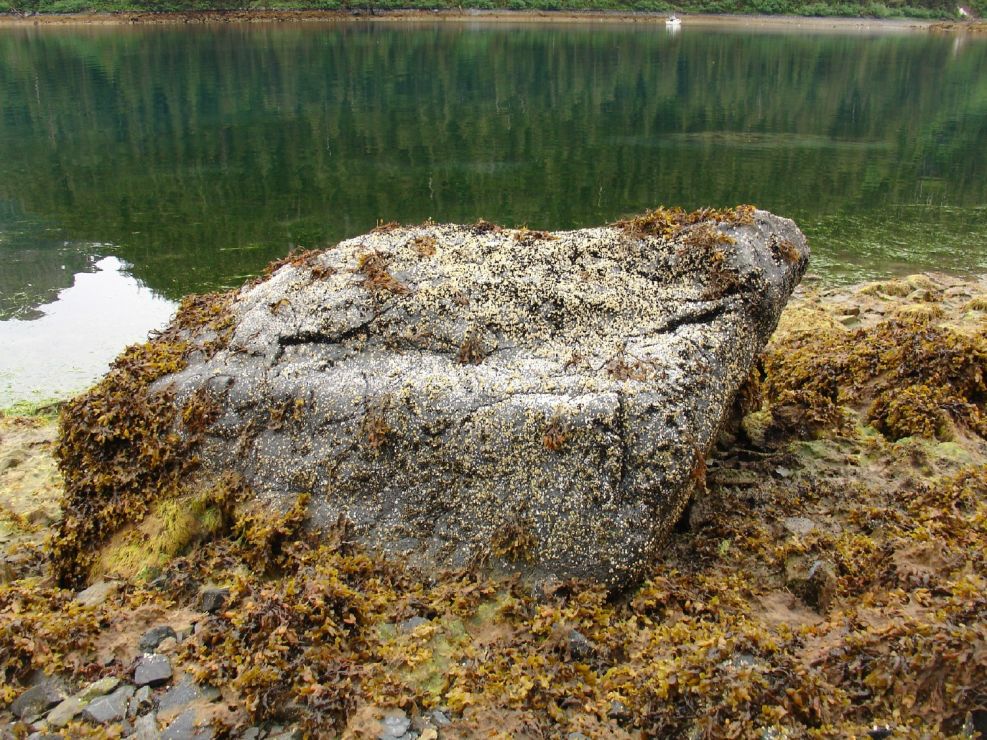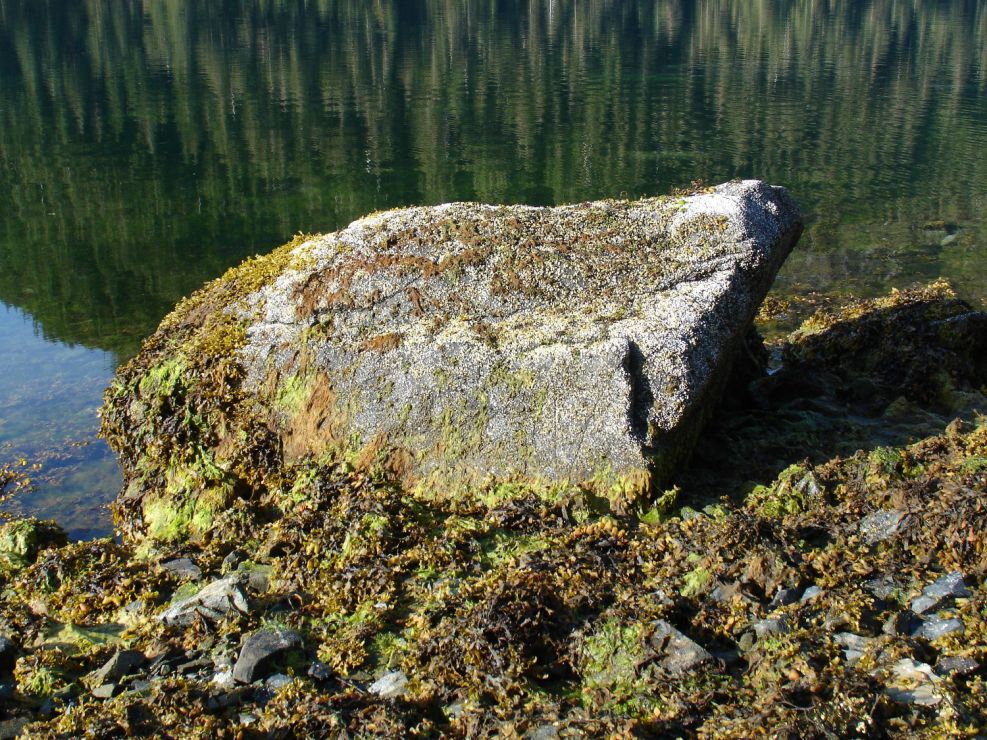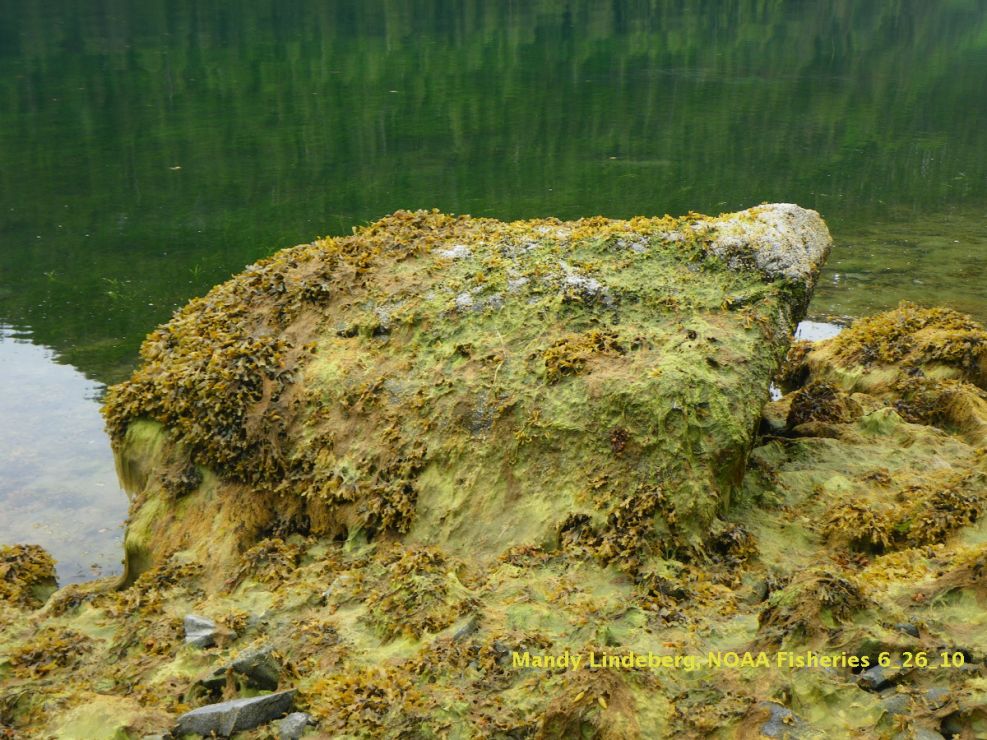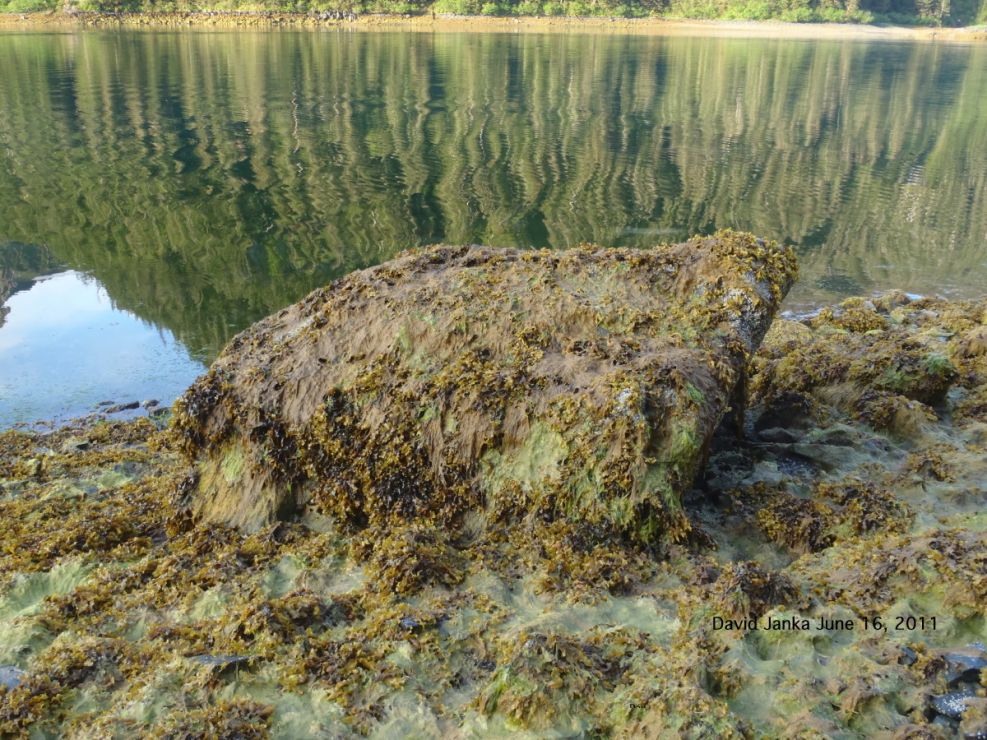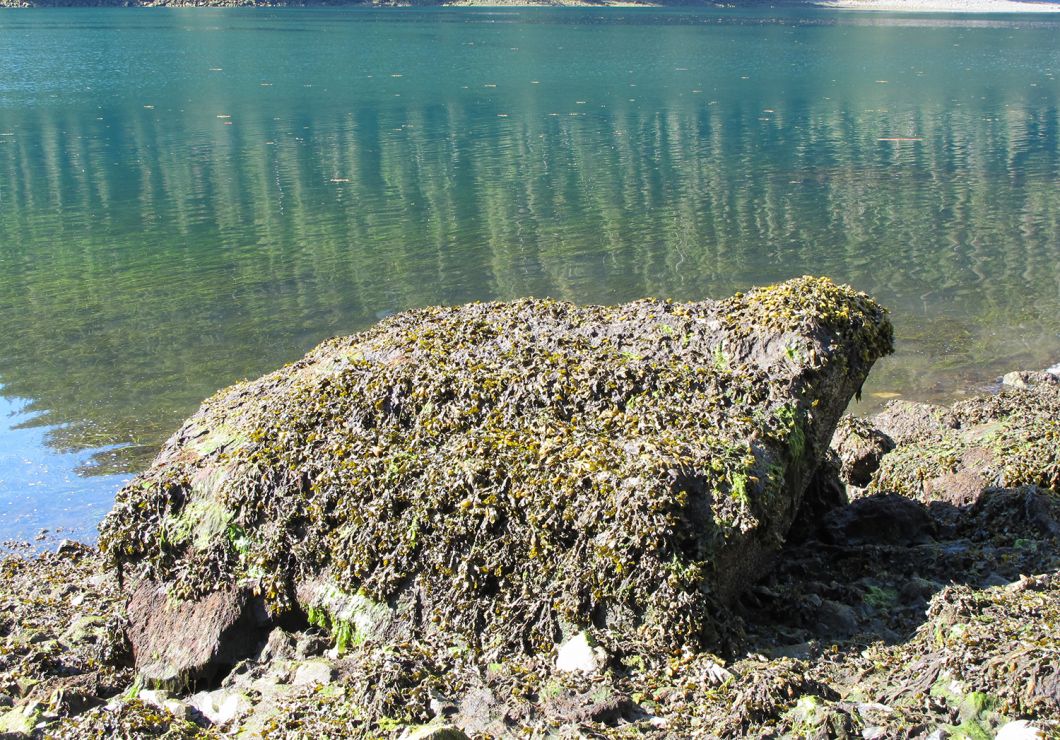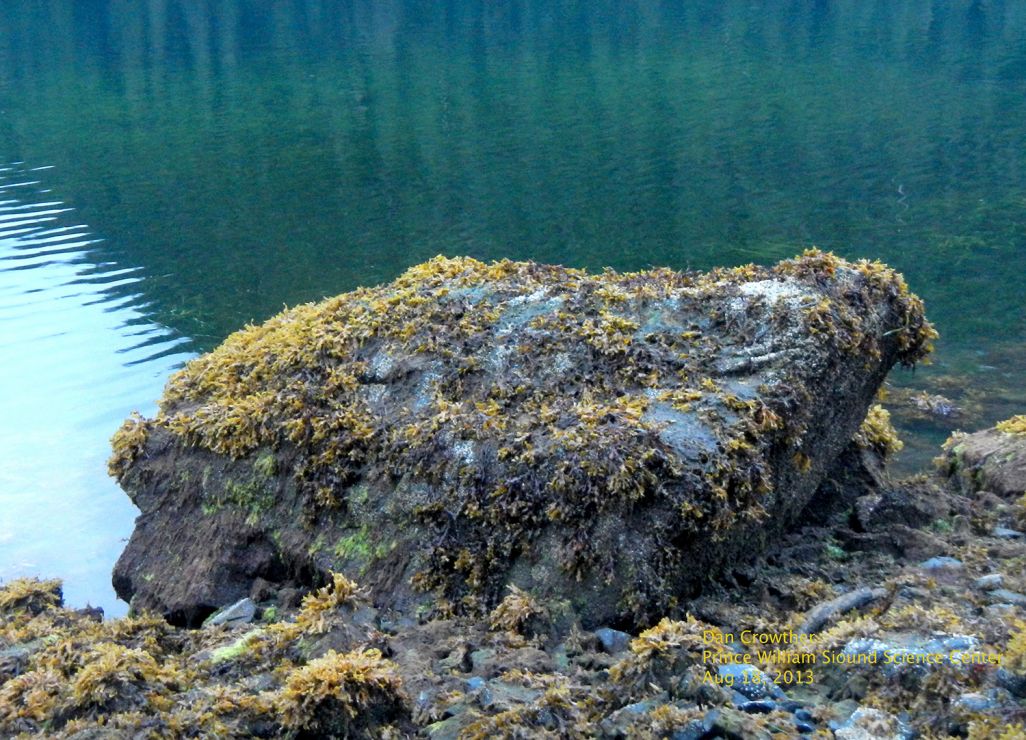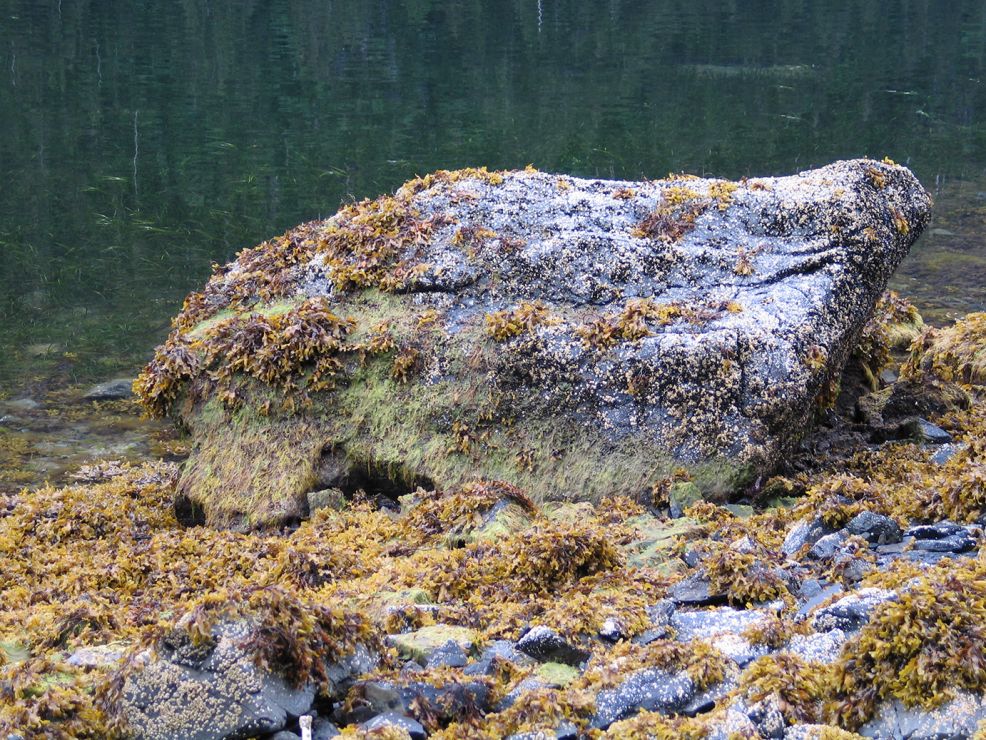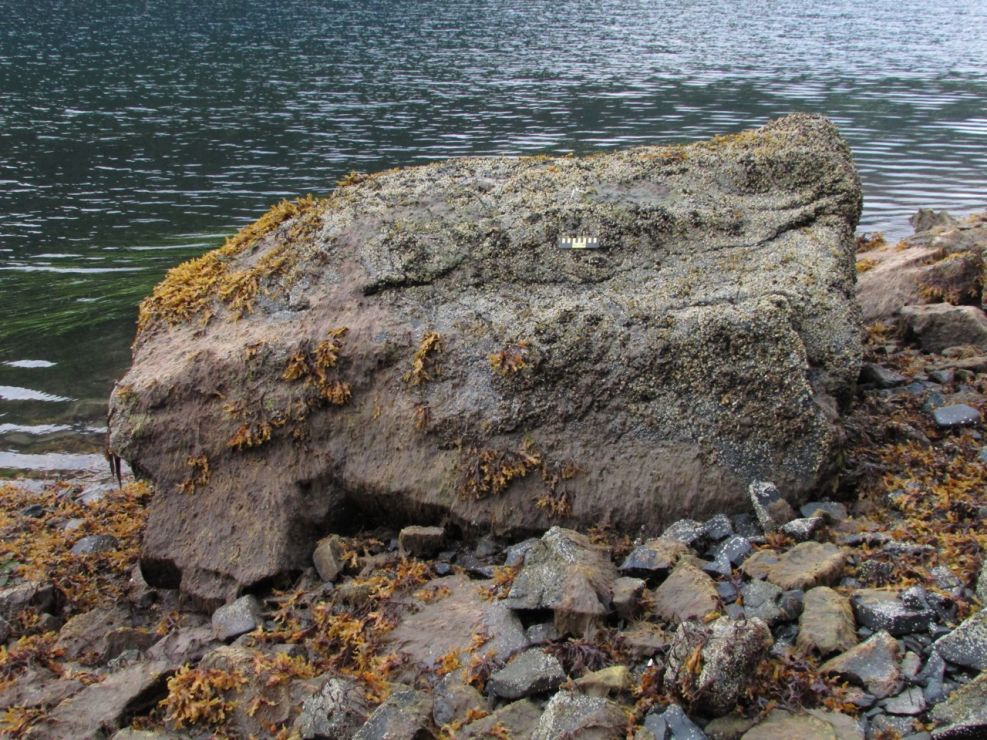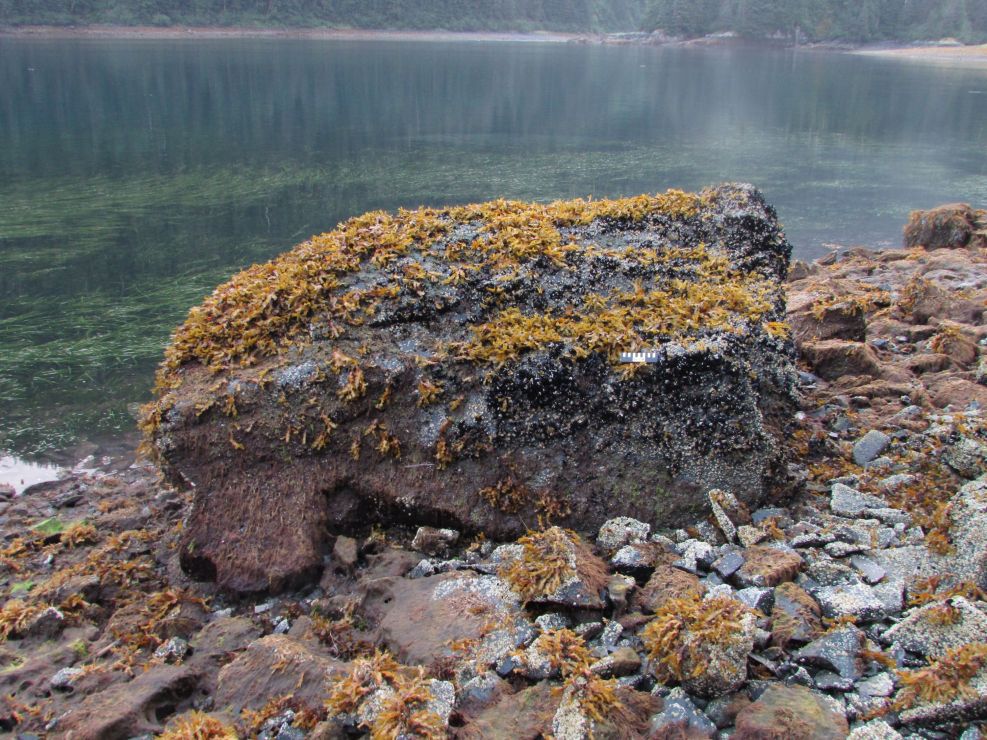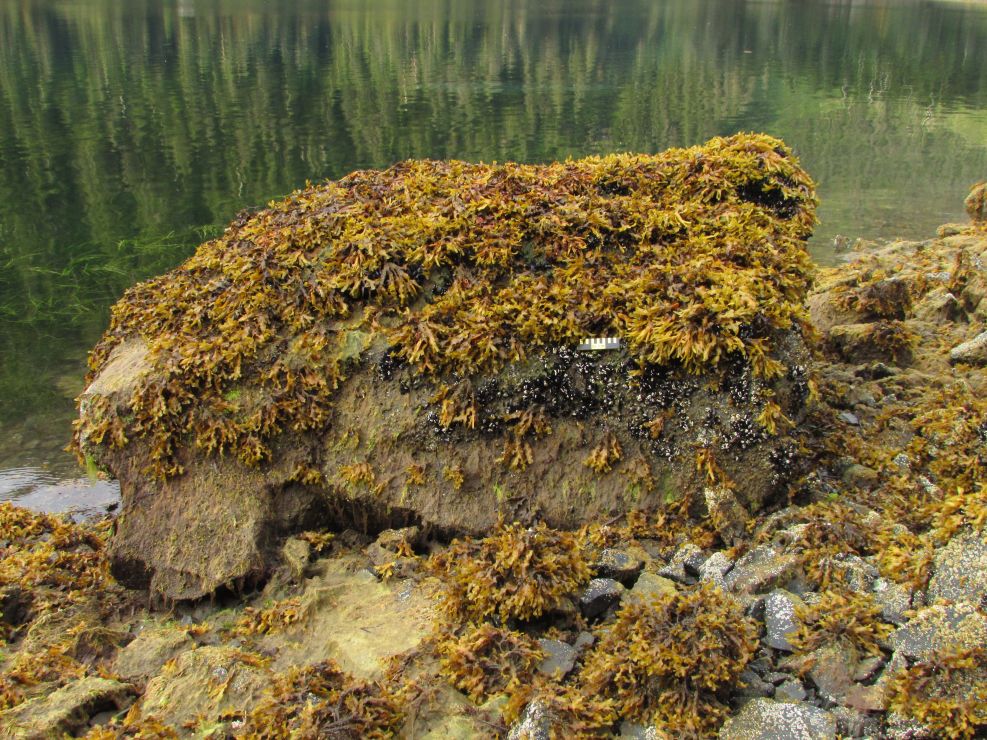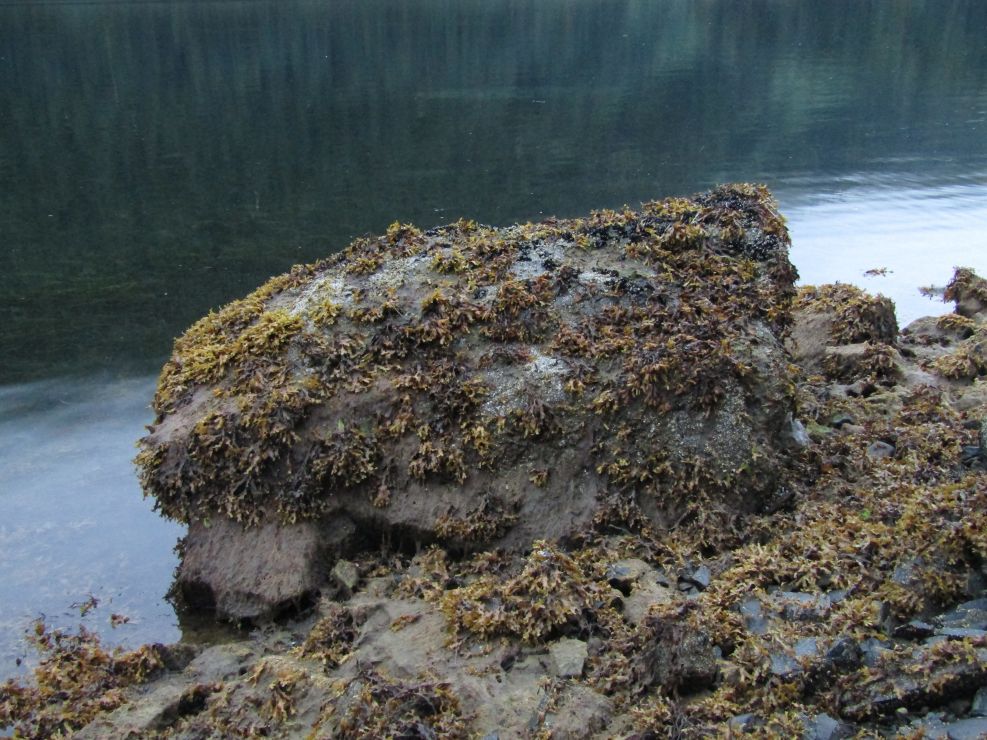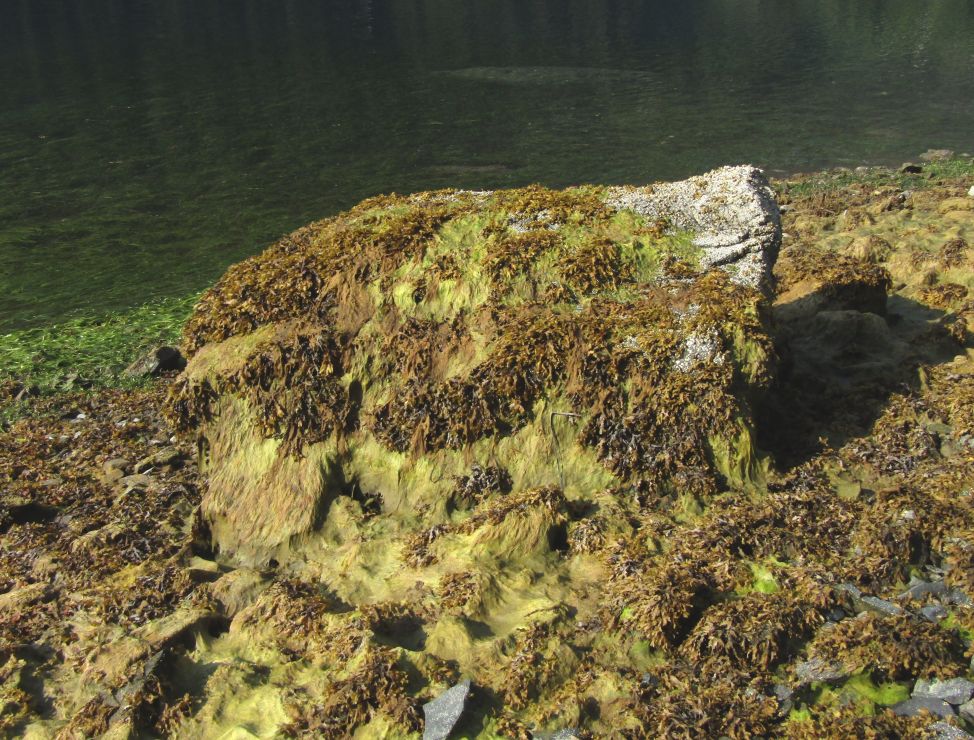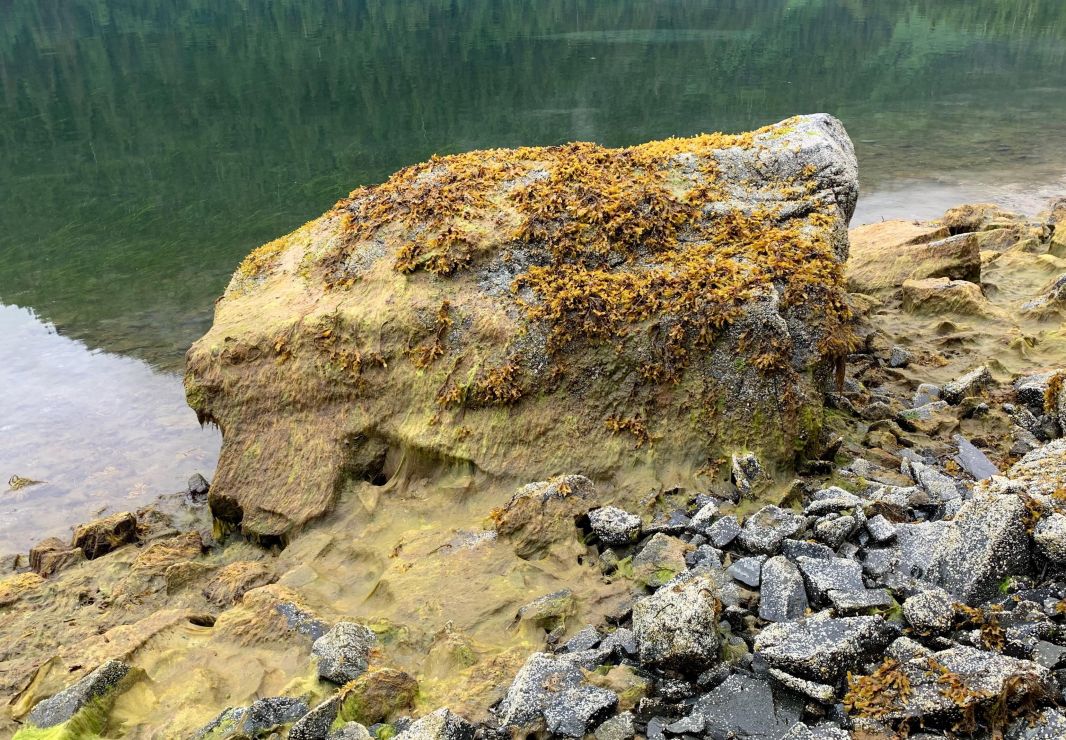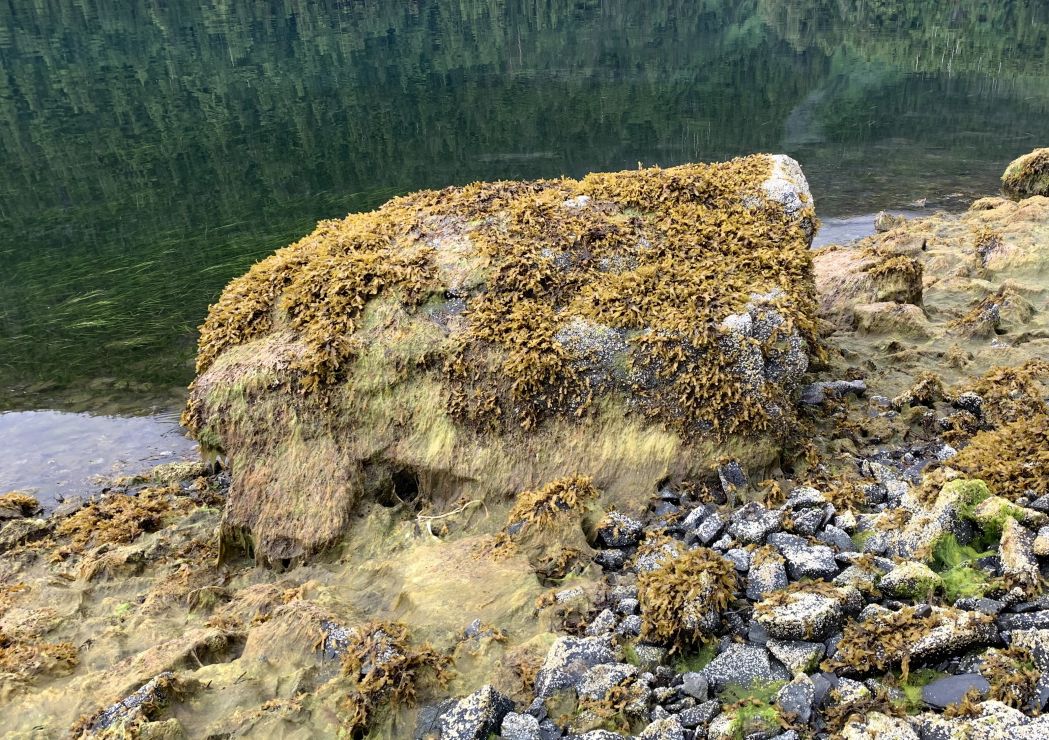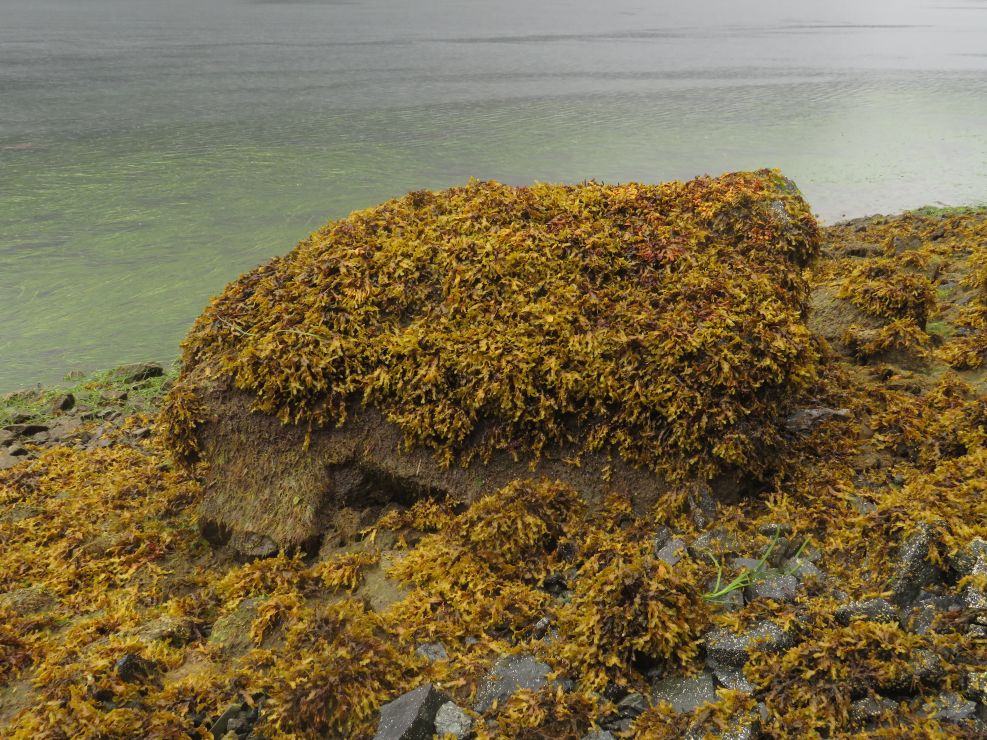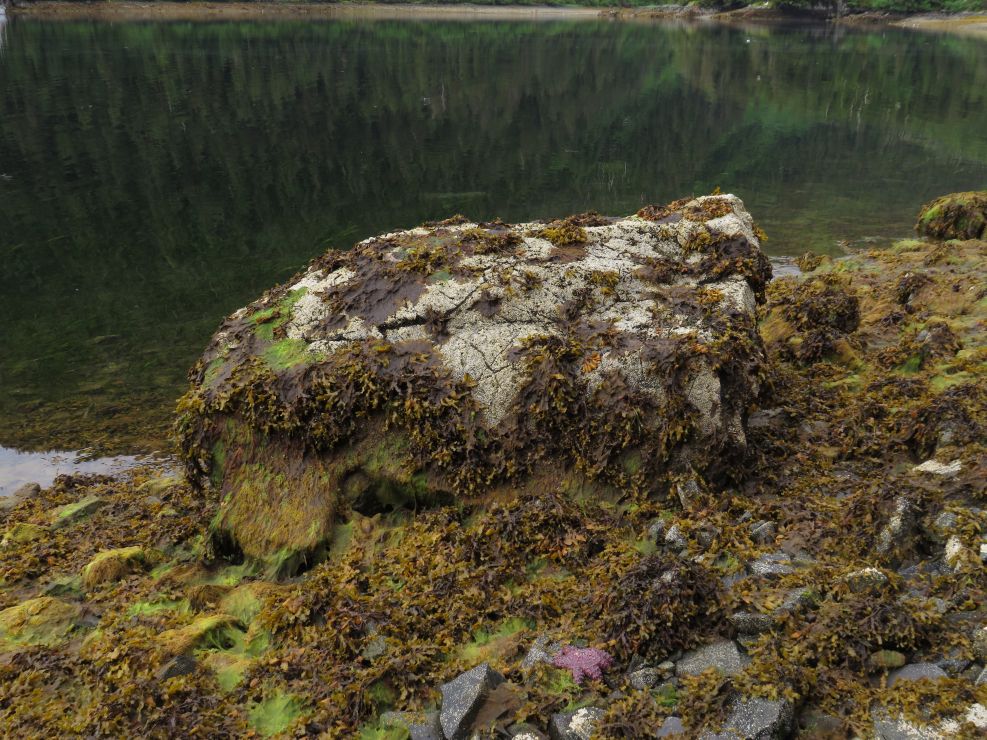During an early morning low tide on Thursday, August 8, 2018, Mr. David Janka of Auklet Charter Services again visited Mearns Rock, sending his photos from the field to Seattle two hours later. This represents the 29th consecutive year of annual photos of the rock site.
What You See
The rock and its beach face are covered with two species of seaweeds, the golden-brown rockweed, Fucus sp, and dark green mats of a filamentous algae. The patches of rockweed cover 35%-40% of the rock surface. There are several small bare spots, exposing patches of small white barnacles.
Along the top, upper right, and half way down on the right, are patches of black medium-sized mussels, covering approximately 5% of the surface.
Mr. Janka also took a closeup photo of the upper right side, and to our surprise, it revealed an ocher sea star, Pisaster.
What's Happening
Conspicuous marine life on the rock has changed dramatically from what it was one year earlier, in August 2017. The cover and thickness of rockweed has declined by half, and the cover of mussels has greatly decreased to one-tenth of the cover seen a year earlier.

In the lower right portion of this image, a sea star, Pisaster, is visible. (David Janka) Click image for larger view.
Of great interest is the appearance of sea star, Pisaster, seen in the inset at right. This is the first time in nearly three decades of observation that we have seen a sea star on the rock. Mussels are preferred food items of this and other species of sea stars. In addition, recall that in 2014, sea stars along the entire west coast and parts of Alaska were killed by a Sea Star Wasting Disease, caused by a widespread virus. Sea stars have been recovering along the coast, so Mr. Janka's image is good to see, even if they are voracious predators of mussels!
We again thank Mr. Janka for visiting the site and sending his great photos.
 An official website of the United States government. Here's how you know we're official.
An official website of the United States government. Here's how you know we're official.



































